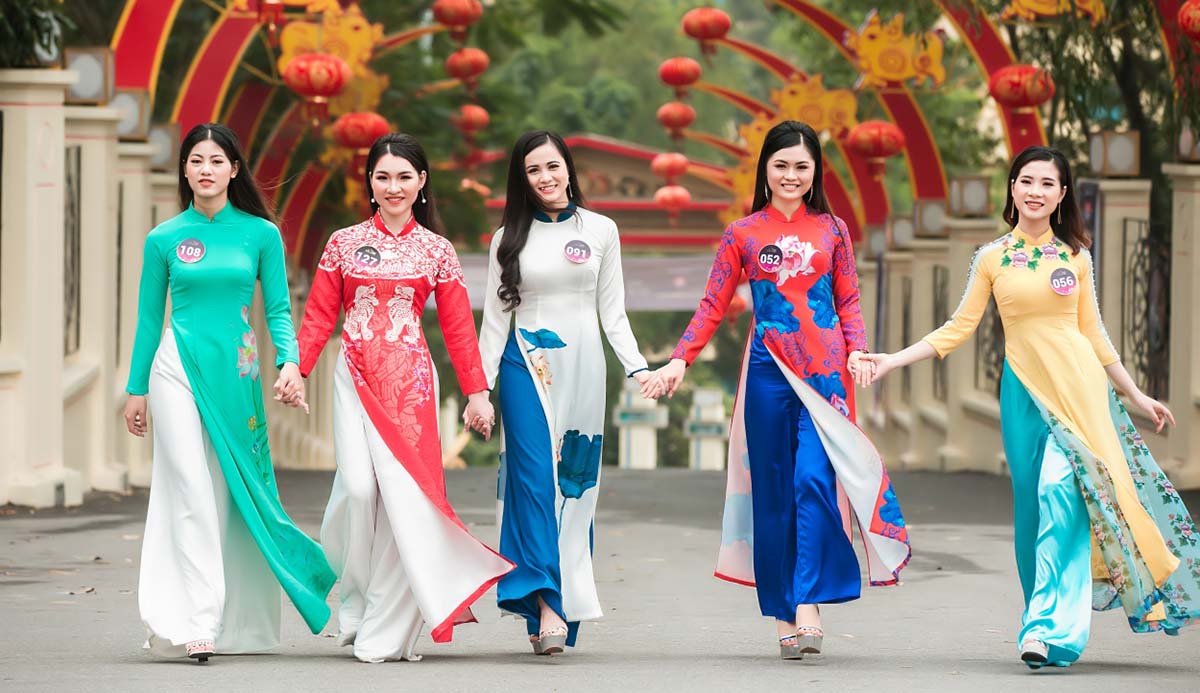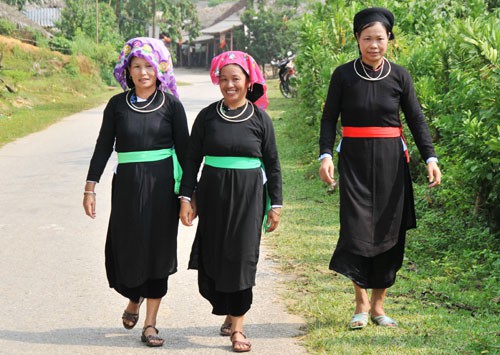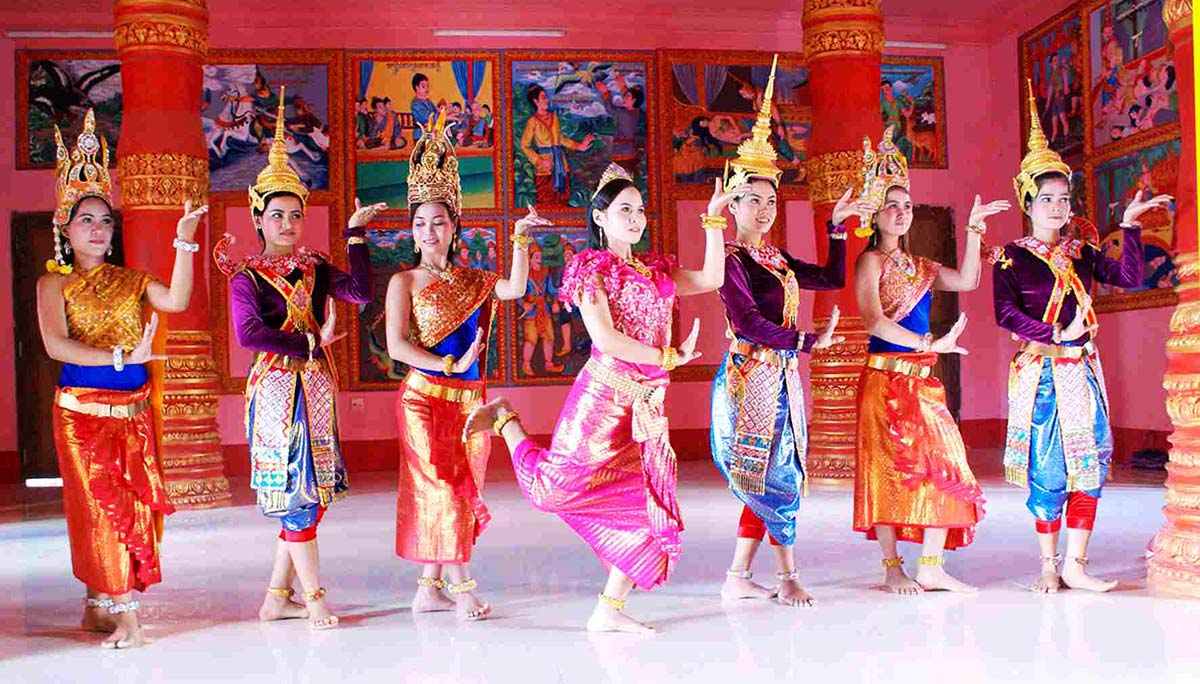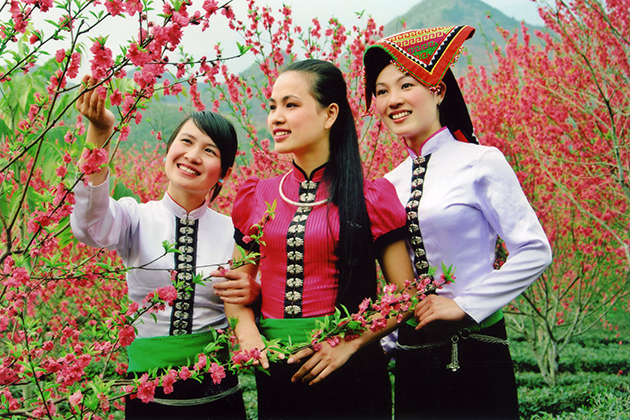Vietnam is considered a multi-ethnic country. There are a total of 54 different ethnic groups in Vietnam. The main group in is the Kinh people, which makes up 85.4% of the population. The remaining 53 ethnic groups make up only 14.6%. There is great diversity in Vietnam’s ethnic groups. Most ethnic minorities are concentrated in the mountainous and rural regions of the country, but due to the war and migration, ethnic minorities can be found scattered all around the country. The languages of Vietnamese peoples can be divided into eight groups: Viet – Muong, Tay – Thai, Mon – Khmer, Mong – Dao, Ka – belt, Nam duc, Han and Tang. 96% of ethnic minorities speak their mother tongue.
 The most populous minorities, with about one million residents per group are the Tay, Thay, Muong, Hoa, Khmer and Nung. The smallest ethnic minorities, with just about a hundred residents per group are Brau, Ro Mam, and O Du.Most of the ethnic groups in Vietnam live in the mountain areas in the north, near the Chinese border to the mountains Truan Son in central Vietnam.Ethnic Kinh are concentrated in about half of the country’s territory, especially in coastal and low-lying areas, and have been engaged in intensive irrigated-rice cultivation and fishing, though that pattern is increasingly changing.
The most populous minorities, with about one million residents per group are the Tay, Thay, Muong, Hoa, Khmer and Nung. The smallest ethnic minorities, with just about a hundred residents per group are Brau, Ro Mam, and O Du.Most of the ethnic groups in Vietnam live in the mountain areas in the north, near the Chinese border to the mountains Truan Son in central Vietnam.Ethnic Kinh are concentrated in about half of the country’s territory, especially in coastal and low-lying areas, and have been engaged in intensive irrigated-rice cultivation and fishing, though that pattern is increasingly changing. The Tay are located in the north of Vietnam. Their villages are based at the feet of mountains with about 15-20 households each. The closely related Thai are believed to have arrived in Vietnam earlier than the Tay, and they are concentrated in the north-west and western parts of north Vietnam. The Muong also inhabit the mountainous region of northern Vietnam, and are generally found in Hoa Binh and Thanh Hoa province. Their language is a Vietic language, closely related to Vietnamese.Khmer Krom, are the forth largest minority with 1.3 million people who are found concentrated in the south, in the delta region of the Mekong River. They are ethnic Khmer and are often considered to be indigenous, as they have inhabited the Mekong delta since before the arrival of the Vietnamese. Their language, Khmer, is part of the Mon-Khmer branch of Austroasiatic languages, and most of them are Buddhists.
The Tay are located in the north of Vietnam. Their villages are based at the feet of mountains with about 15-20 households each. The closely related Thai are believed to have arrived in Vietnam earlier than the Tay, and they are concentrated in the north-west and western parts of north Vietnam. The Muong also inhabit the mountainous region of northern Vietnam, and are generally found in Hoa Binh and Thanh Hoa province. Their language is a Vietic language, closely related to Vietnamese.Khmer Krom, are the forth largest minority with 1.3 million people who are found concentrated in the south, in the delta region of the Mekong River. They are ethnic Khmer and are often considered to be indigenous, as they have inhabited the Mekong delta since before the arrival of the Vietnamese. Their language, Khmer, is part of the Mon-Khmer branch of Austroasiatic languages, and most of them are Buddhists. One group of more than 30 indigenous communities often lumped together are the Degar, sometimes referred to as Montagnards, a French term related to their presence in the highlands of Vietnam, though this was limited to the central highlands area. Except for their traditionally inhabiting highlands, these groups have in fact different cultures and their languages belong to two distinct family groups, the Malayo-Polynesian and Mon-Khmer. Many of the Degar are Protestant. There are between 1 and 2 million Degar people. Among the largest groups are the Jarai, Rhade and Bahnar.
One group of more than 30 indigenous communities often lumped together are the Degar, sometimes referred to as Montagnards, a French term related to their presence in the highlands of Vietnam, though this was limited to the central highlands area. Except for their traditionally inhabiting highlands, these groups have in fact different cultures and their languages belong to two distinct family groups, the Malayo-Polynesian and Mon-Khmer. Many of the Degar are Protestant. There are between 1 and 2 million Degar people. Among the largest groups are the Jarai, Rhade and Bahnar. There is also a significant size of the ethnic Chinese minority in Vietnam, with around 1 million inhabitants, also known as Hoa. Most Hoa are descended from Chinese settlers who came from the Guangdong province from about the eighteenth century, and it is for this reason that most of them today speak Cantonese, though there is also a large group who speak Teochew.There are a number of religious minorities in Vietnam, including significant Catholic and Protestant minorities, the Cao Dai and Hoa Hao, which both originated in the Mekong River delta during the nineteenth century (both native and distinct Buddhist sects), as well as Sunni and Bashi Muslims in the south and among the Chams (with perhaps 15 per cent of the Chams still adherents of Hinduism). The latter’s language belongs to the Malayo-Polynesian branch of the Austronesian language family, and they are generally thought to be descendants of the ancient kingdom of Champa.Want to explore all the ethnic groups in Vietnam? Book a tour with us. Need more information? Don’t hesitate to contact us, we will be more than happy to answer your questions!
There is also a significant size of the ethnic Chinese minority in Vietnam, with around 1 million inhabitants, also known as Hoa. Most Hoa are descended from Chinese settlers who came from the Guangdong province from about the eighteenth century, and it is for this reason that most of them today speak Cantonese, though there is also a large group who speak Teochew.There are a number of religious minorities in Vietnam, including significant Catholic and Protestant minorities, the Cao Dai and Hoa Hao, which both originated in the Mekong River delta during the nineteenth century (both native and distinct Buddhist sects), as well as Sunni and Bashi Muslims in the south and among the Chams (with perhaps 15 per cent of the Chams still adherents of Hinduism). The latter’s language belongs to the Malayo-Polynesian branch of the Austronesian language family, and they are generally thought to be descendants of the ancient kingdom of Champa.Want to explore all the ethnic groups in Vietnam? Book a tour with us. Need more information? Don’t hesitate to contact us, we will be more than happy to answer your questions!